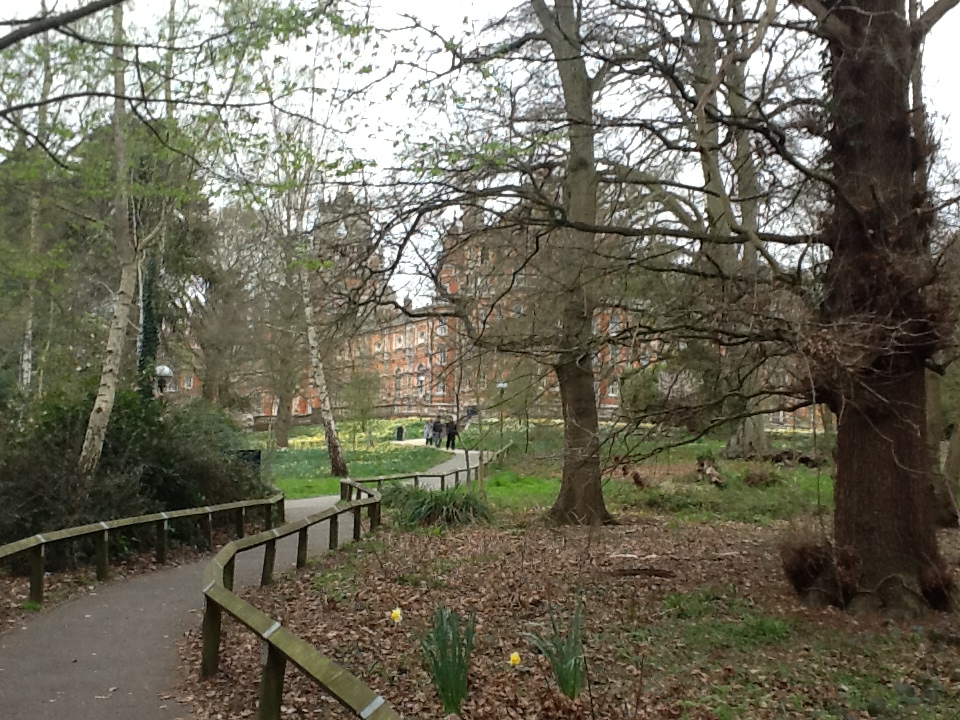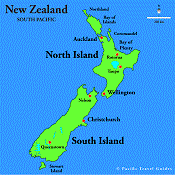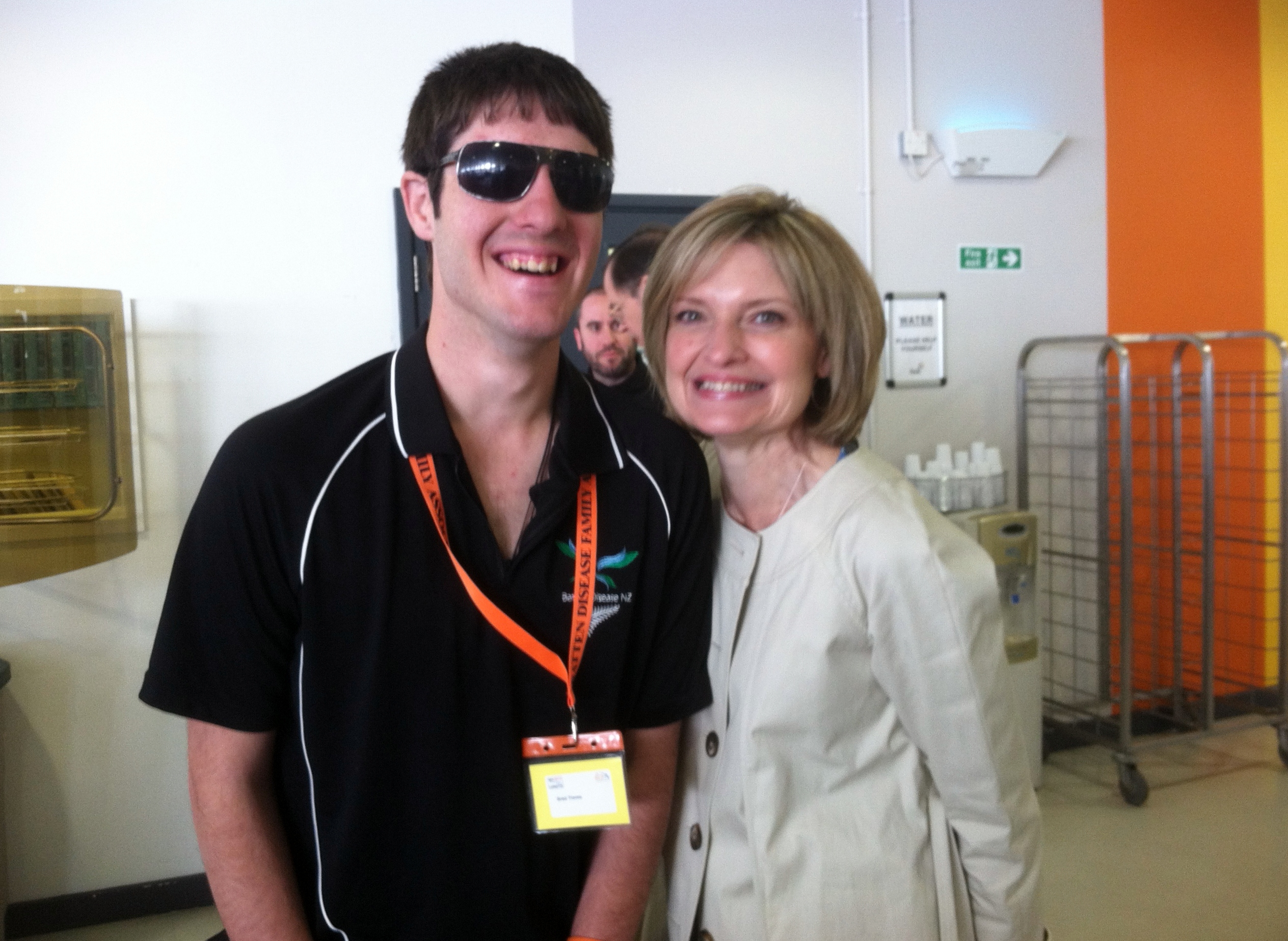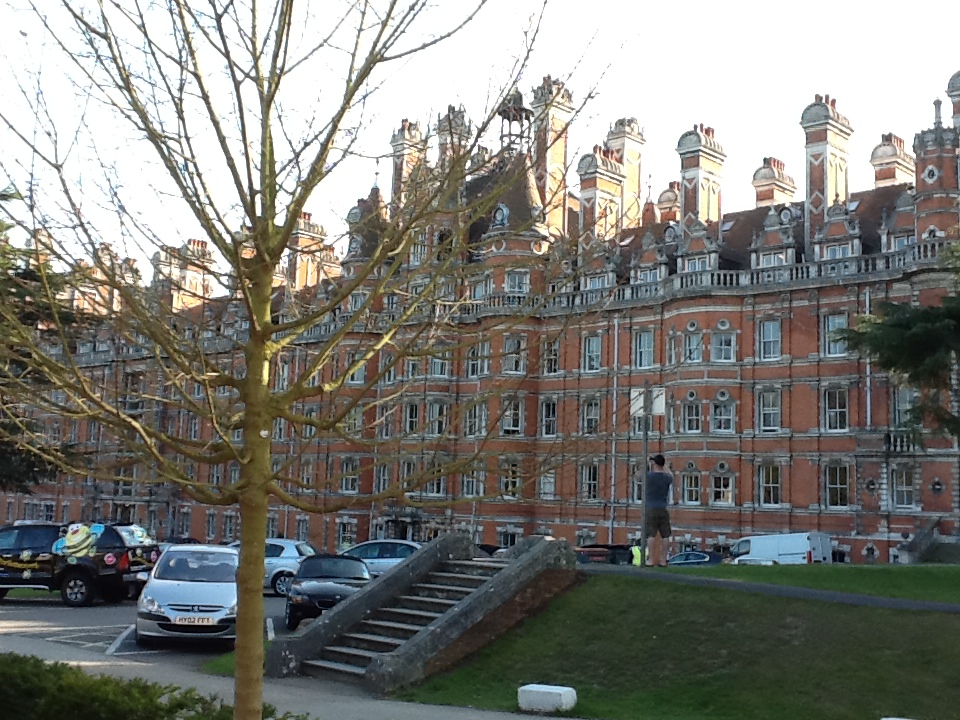My four-part “Notes from London” series wrapped up with the conclusion of the international conference on neuronal ceroid lipofuscinoses (NCL) yesterday, but I received this photo tonight and had to share it. The smiling young man standing with Mom is 21-year-old Brad of New Zealand, who traveled to London with his father for the family portion of the conference and made quite the impression on my mother (read the post here). Brad suffers from juvenile Batten disease, but his personality energizes a room. I know that meeting Brad will be one of the experiences that sticks with my mother forever.
Notes from London: Day Four
 Today marks the end of the 13th International Conference on Neuronal Ceroid Lipofuscinoses (NCL) at the University of London’s Royal Holloway College. That means this is also my last “Notes from London” post.
Today marks the end of the 13th International Conference on Neuronal Ceroid Lipofuscinoses (NCL) at the University of London’s Royal Holloway College. That means this is also my last “Notes from London” post.
Mom walked this path from her dorm room to the conference center and back again many a time in the past few days. She submitted her final update to me just before the closing banquet and her final climb up the path.
I learned a lot about the setting for this conference – so unlike the nondescript, cookie-cutter American hotels to which we’re so accustomed, via Mom’s final update.
“I went to breakfast the first day and haven’t been back since,” she writes. “No problem with the food – best porridge ever – but I’ve been trying to catch up on sleep. As for the other meals…this is a college, so the proportions are gigantic and I’ve not suffered for lack of carbs. The traditional “pub” dinner was interesting. Fish and chips (HUGE piece of fried fish! May I have mine grilled, please? What???), mashed potatoes, Toad in the Hole (ah, no).” At the end, they served Treacle Tart, a “very traditional” dessert. “Oh, I’ve had that before – it’s Chess Pie!” Mom said, to which the server responded, “No, it’s Treacle Tart.” Last night’s theme was curry – curried chicken, curried lamb, curried rice, curried veggies. Mom didn’t comment on the curry – but she went out of her way to say she enjoyed the salad bar!
Mom wanted to be on time for this morning’s session highlighting emerging and novel therapies for the various forms of NCL (Batten disease), so she ran up the hill. Most of the therapies focused on infantile NCL (the form that affects Taylor) and late infantile NCL, both of which are caused by deficiencies in soluable enzymes. The following therapies were of particular interest for Mom:
- Dr. Mark Sands from Washington University in St. Louis described his recently published project demonstrating the synergistic effect of combining gene therapy and bone marrow transplantation for infantile NCL. The data is incredible, and the work MUST go forward.
- Dr. Sandra Hofmann of the University of Texas Southwestern in Dallas presented data for her enzyme replacement therapy project. To date, Taylor’s Tale has directly contributed $230,000 to this specific project. In the coming year, Dr. Hofmann and Dr. Sands will collaborate in order to expand the reach of their projects.
- Dr. Steven Gray of the University of North Carolina at Chapel Hill presented a gene therapy platform that may work for multiple Batten disease gene therapy approaches (i.e. infantile AND late infantile NCL). Interestingly, it requires an intrathecal injection – which is a routine, non-surgical procedure with minimal complications. Dr. Gray’s work is very interesting, and as a North Carolina-based non-profit organization, we love that it is happening in our own backyard.
- Several experts presented on enzyme replacement therapy for late infantile NCL. This work is very close to clinical trial. They showed videos of the long-haired dachshunds in the canine study (yes – dachshunds, too, get Batten disease). The dogs were in the end-stages of the disease and, of course, very sick. They suffered from persistent myoclonic jerks, mental abnormalities, loss of visual tracking, inability to eat…the list goes on. It painted a heartbreaking picture, and Mom saw many faces turn away from the screen and heard many moans of distress among the audience. And yet – the terrible images on the screen did not represent a Hollywood-manufactured horror film. They represented the very real picture of children with this disease. If it breaks our hearts to see it in an animal, what are we going to do about getting behind the incredible scientists who gathered in London this week and help them end the horrors happening in children like my sister, Taylor?
I have so much hope for the future. Many thanks to those at King’s College London, the Batten Disease Family Association based here in the UK, and others for organizing this tremendously valuable conference. The 14th International Conference on Neuronal Ceroid Lipofusinoses (Batten Disease) will be held at the National University of Cordoba in Argentina. Best of luck to all of the scientists as they head back to their labs. It is with great hope that I look forward to meeting you all again in Argentina to hear of successes in the battle against Batten. I, and many other families, are counting on you.
Notes from London: Day Three
Mom must have looked tired when she walked into the conference center this morning, because a kind woman asked how she was feeling.
“Oh, I’ve been hit by a brick,” Mom answered.
The woman’s concerned look turned to one of horror. “I forget that this is an INTERNATIONAL conference,” Mom writes to me later. Determined mothers cross oceans for their sick children. Apparently, hyperboles do not! 🙂
Today marked the official establishment of the Batten Disease International Alliance (BDIA), counting 46 non-profit family support and research organizations from across the globe among its founding members. Following are some of the new alliance’s goals:
- Exchange knowledge/education/support
- Disseminate recent findings
- Promote collaborations
- Identify research gaps and create global resources
- Establish standard practice in merit review
- Provide joint funding to accelerate patient-oriented research
- Provide international voice to governments and organizations to ensure fair, included representation of Batten disease in matters relating to research, support, clinical and promotional activities
Day three yielded incredible information – and more questions. That is the nature of our war. I’ll leave you with this – the end of my mother’s message to me:
 On a lighter note, I met a very special young man, Brad, and his dad, Mark Timms, this afternoon. Brad and his family traveled from New Zealand to attend this joint conference of researchers and families. Brad is 21 and fighting juvenile Batten disease. Brad is absolutely delightful, and his personality reminds me a great deal of my Taylor. He is spunky, witty and very talkative. I said hello and introduced myself. In a split second, Brad responded in my very southern drawl (I think he threw in “y’all” for good measure!), followed by a big laugh. Yes, you are definitely “Mr. Cool,” Brad, and I’ll never forget you!
On a lighter note, I met a very special young man, Brad, and his dad, Mark Timms, this afternoon. Brad and his family traveled from New Zealand to attend this joint conference of researchers and families. Brad is 21 and fighting juvenile Batten disease. Brad is absolutely delightful, and his personality reminds me a great deal of my Taylor. He is spunky, witty and very talkative. I said hello and introduced myself. In a split second, Brad responded in my very southern drawl (I think he threw in “y’all” for good measure!), followed by a big laugh. Yes, you are definitely “Mr. Cool,” Brad, and I’ll never forget you!
Now, I still feel like I was hit by a brick – I’m going to bed.
Love,
Mom
Notes from London: Day Two
 Mom had an incredibly busy day in London.
Mom had an incredibly busy day in London.
She ran into Steven Gray, a researcher in the Gene Therapy Center at the University of North Carolina at Chapel Hill (yes, my fellow North Carolinians – the world of Batten disease is a dark and scary one, but there is promise – and it is right here in our own backyard!). Mom and my uncle David, a neurosurgeon in Greensboro, and I all drove to Chapel Hill to have dinner with Dr. Gray last year; as we left the restaurant that night, I knew we’d meet again.
Mom met Arlene Drack, an ophthalmologist from the University of Iowa. Mom saw Dr. Drack’s poster and knew she just had to talk to her; Dr. Drack is investigating the retinal degeneration that leads to blindness in Batten disease. Children with Batten disease face so much loss – the vision loss alone is incredibly devastating. These kids are already fighting to walk, to express themselves in ways most of us take for granted, to socially engage with their peers – but the blindness drops a heavy curtain, ensuring their separation from so much that makes life “normal.” If the blindness alone could be stopped, kids like Taylor would have a much greater quality of life. For six fleeting weeks in 2006, we thought Taylor had retinitis pigmentosa (RP) – an incurable, progressive eye disease that causes loss of central and peripheral vision. I remember how our world came crashing down on us the day we got the RP diagnosis. For six weeks, RP was the worst thing in the world.
She spoke to Andy Tincu and Bruce Vuillemenot, two talented scientists with BioMarin; they are working on a promising therapy for late infantile Batten disease.
It is apparent that science has made great progress since Taylor’s diagnosis nearly six years ago…and yet, there is much left to do. Rare diseases need more funding; they need the voice of the people. They have been overlooked for far too long. “Thank goodness for these scientists fighting a good fight to find therapies for patients with rare diseases – many of them children!” Mom writes.
Mom’s next words to me aren’t her last, but they’ve stuck with me more than the rest.
“I’m not fighting hard enough,” she says, calling out others as “incredible warriors who have made a difference. I’m humbled.”
I have an extraordinary amount of respect for all of the other warriors brave enough to wage this war on Batten disease and all rare diseases. I, too, am humbled.
But I have a difficult time letting my mother get by thinking she’s not fighting hard enough. She’s the greatest warrior I’ve ever known – a warrior willing to cross oceans and even galaxies for children – if only she had a spaceship.
Notes from London: Day One
Yesterday afternoon, Taylor’s Tale’s co-founder, current president and greatest embodiment of the word “believe” – my mom, Sharon King – took off from Charlotte bound for London, England – site of the 13th annual international conference on neuronal ceroid lipofuscinosis (Batten disease).
Transoceanic flights are never easy, but Mom’s proved to be especially draining. Our good friend and fellow board member, Callie, drove her to the airport around 1:30 p.m. EST Tuesday; this morning around 6:30 a.m. EST, my iPhone trilled the arrival of an early-morning email – Mom’s, announcing that she had at last arrived on the other side of the big pond after getting rerouted through our nation’s capital and suffering through a “totally forgettable” overnight sardine imitation in economy class.
Despite her rough night of “sleep” in a sardine can, though, Mom had a busy first day at the University of London’s Royal Holloway College. She quickly stumbled upon the first organizing meeting of the Batten Disease International Alliance. Though she hadn’t been aware of the meeting, the woman at the registration table “knew” Taylor’s Tale and urged Mom to attend the meeting.
Outside of the meeting, Mom also had the opportunity to catch up with some familiar faces.
The venue itself is wonderful – a very old, grand campus (in Mom’s words – kind of “Harry Potter-ish!”) coalesced with a modern conference center, all in an incredibly compact setting. The building was constructed in the 1800s as a women’s college and christened by Queen Victoria. There was a reception in a grand gallery filled with beautiful paintings. Mom commented that the conference is very well attended (sold out, in fact) and that 40-plus family members are expected to join the scientists (well, and hard-core family members like Mom!) on Friday.
More to come soon!


